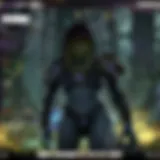Mastering Deck Strategies in Dota: A Detailed Guide
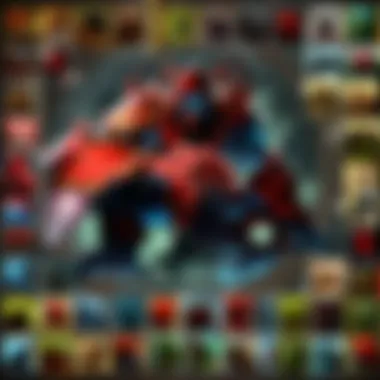
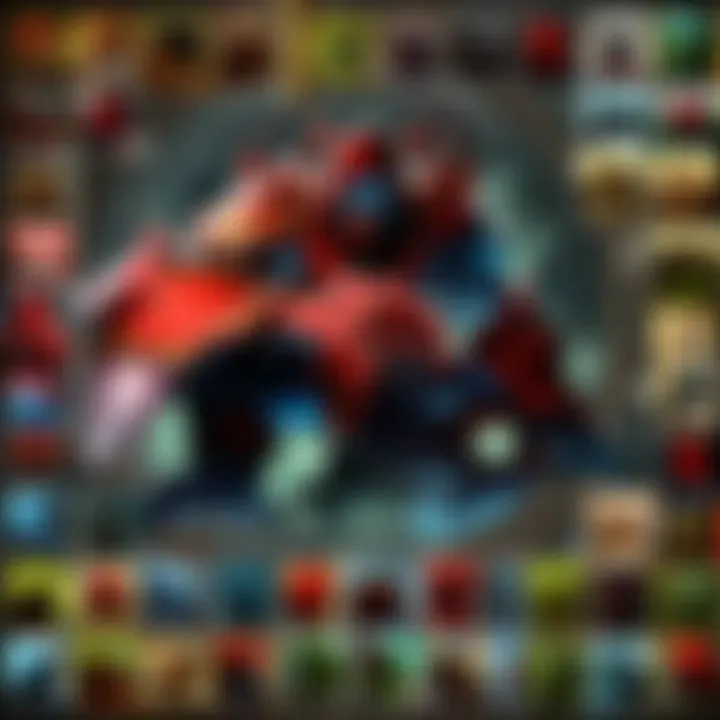
Intro
When stepping onto the battlefield of Dota, every choice can make or break the game — especially the deck you build. Understanding how to construct an optimal deck involves more than just picking heroes; it’s about crafting a well-rounded strategy that synergizes with your team and counters the enemy’s strengths. This guide will dissect the fundamentals of deck strategy in Dota, offering insights into hero selection, team compositions, and the evolving meta.
In a game where every match feels different, adapting to changes can be an uphill battle. New patches can shift hero viability, alter item effectiveness, and introduce fresh mechanics that require players to rethink their strategies. Therefore, grasping the nuances of your deck and recognizing when to pivot your approach are essential skills. Here, we will peel back the layers on hero guides, patch notes, competitive strategies, and community insights to enhance your gameplay.
Stop and think for a moment: what elements make a winning deck? Is it the raw power of your heroes? The finesse of teamwork? Perhaps it's the adaptability to the meta shifts? Whatever the answer, you'll find the knowledge to elevate your game lies within these sections, connecting the dots on how to approach Dota strategically.
Hero Guides
Building a strong deck often begins with understanding the heroes you choose. Each hero has unique abilities and roles that can drastically affect the game's outcome.
Basics of the Hero
A solid grasp of your selected hero's strengths and vulnerabilities lays the groundwork. For instance, if you’re opting for a tank hero like Axe, you know that his ability to absorb damage is pivotal for leading team fights.
Skill Build and Leveling Guide
Skill builds can vary depending on the structure of your team and the enemy composition. Axe, for instance, typically benefits from leveling his Berserker's Call early to initiate fights effectively. It’s crucial to analyze the ebb and flow of fights and adjust your leveling accordingly.
Itemization and Recommended Items
Equipping your hero with the right items is equally critical for performance. Continuing with Axe, items like Blink Dagger for initiation and Blade Mail for damage reflection enhance his effectiveness. Understanding core items versus situational items will provide flexibility during gameplay.
Strategies and Tips for Playing the Hero
To play Axe optimally, communication with your team is key. Initiate from the right position, and don't forget to follow up with your disables. Be mindful of the enemy heroes; knowing when to engage and disengage can be the difference between winning and losing a skirmish.
Game Updates & Patch Notes
Staying informed about game updates is perhaps the most crucial aspect of maintaining a competitive edge.
Summary of the Latest Patch Notes
Valve frequently rolls out patches that adjust hero balance, item statistics, and gameplay mechanics. Keeping abreast of these changes allows you to modify your strategies accordingly.
Changes to Heroes, Items, and Gameplay Mechanics
For example, a recent patch might have nerfed Faceless Void, making him less effective at earlier stages of the game. This adjustment could encourage players to look for different heroes that fill the gap in team compositions.
Impact on the Meta and Competitive Scene
A significant patch can alter the meta dramatically. It might shift the power balance towards agility heroes or emphasize the importance of crowd control. Noting these impacts helps players anticipate shifts in deck strategy to stay competitive.
Competitive Strategies
When you gaze into the competitive landscape, you’ll find a rich tapestry of strategies that can be employed.
Analysis of Popular Strategies in the Current Meta
Currently, the meta has seen a rise in team compositions that prioritize mobility and burst damage. Heroes like Puck and Tornado are favored for their ability to make swift decisions on the fly.
Team Compositions and Synergies
Building a team where heroes complement each other is crucial. A mix of tanks, damage dealers, and support heroes ensures balance. Remember that the synergy between heroes can make or break the dynamics of the team.
Counter Picks and Situational Strategies
Conversely, it’s equally important to recognize when to counter-pick. If facing a team that relies heavily on magic damage, items like Black King Bar or heroes with innate magic resistance become vital. Having a few tricks up your sleeve for situational strategies can turn the tide in your favor.
Community Events & Tournaments
Keeping your finger on the pulse of community events can offer valuable insights.
Overview of Upcoming Tournaments and Events
Tournaments not only showcase the best players but also provide a glimpse into future metas. Their strategies can serve as learning lessons for your gameplay.
Event Schedules and Prize Pools
Following event schedules and understanding prize pools can fuel your competitive spirit. Whether it’s The International or local tournaments, involvement can inspire improvement.
Player Interviews and Insights
Listen to what top players have to say about their strategies and choices. Their experiences reveal valuable lessons that can be directly applied to your games.
New Releases & Game Reviews
Finally, new content keeps the game fresh.
Reviews of Newly Released Heroes, Updates, or Patches
When new heroes are introduced, their reviews can provide a wealth of knowledge. Understanding their strengths and weaknesses right off the bat can save precious time while building decks.
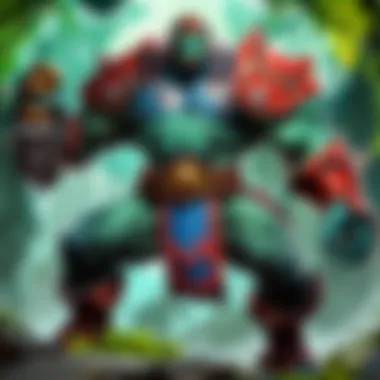
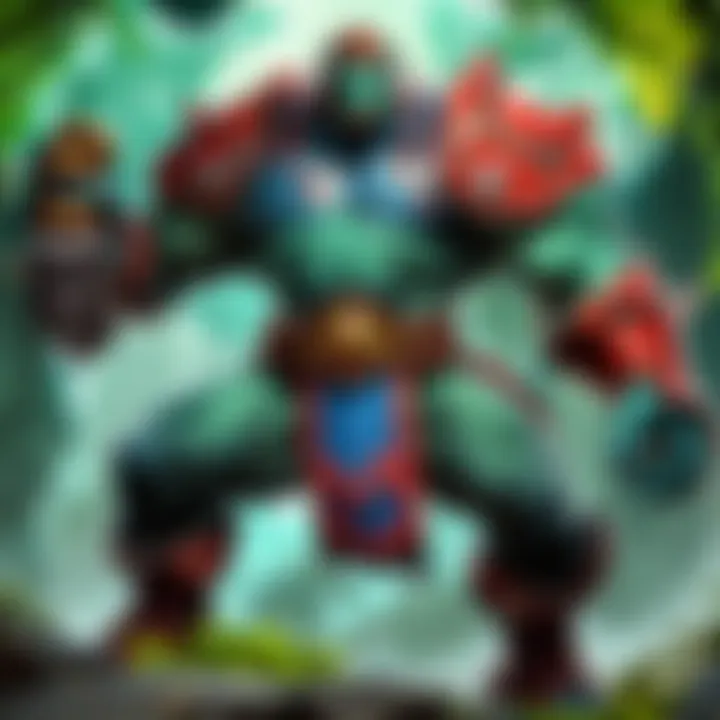
In-Depth Analysis of New Features or Mechanics
Stay informed about any new game mechanics as they often shift the opportunities within the strategy fabric.
Comparison with Previous Versions and Community Feedback
Keeping an eye on community feedback helps to assess whether new changes are progressing towards enhancing gameplay or if adjustments are still needed.
By delving deep into these areas, you will not only optimize your deck strategy in Dota but thrive in the complexities of gameplay as a whole.
Understanding Decks in Dota
In the vast landscape of Dota, the term "deck" isn’t just a collection of heroes or items. It embodies a player’s strategy, synergy, and the very essence of gameplay. Recognizing this can be a game changer, especially for both budding players and veterans alike.
Defining a Deck in Dota
A deck in Dota essentially refers to the specific combination of hero choices and item builds that a player employs during a match. Simply put, it’s like the recipe you follow when cooking your favorite dish; each ingredient must work harmoniously to create a delectable outcome.
In this context, a well-defined deck takes into account heroes that complement each other’s abilities. For instance, if one hero focuses on crowd control, it makes sense to pair that hero with another who can deal significant burst damage. Think of it as forming a band where each musician has to play their part flawlessly to create a symphony.
When players talk about their decks, they're really discussing how they plan to leverage their heroes' strengths against their opponent's weaknesses. This is crucial; knowing whether your deck skews more toward aggressive tactics or defensive maneuvers can affect your entire match strategy.
The Role of Decks in Gameplay
The role of decks transcends mere choice; it's a strategic framework that guides players through the complexities of Dota. Decks can dictate pacing, determine playstyles, and even influence the course of a match. The synergy between heroes not only impacts individual performance but also shapes team dynamics.
In practical terms, understanding how your deck functions can save you from pitfalls during a game.
- Flexibility: A well-constructed deck allows for adaptability. You might enter a match aiming for a quick aggression, yet if you find the enemy faring well against your strategy, knowing how to pivot becomes critical.
- Predicting Opponent Moves: Familiarizing yourself with an effective deck means you can anticipate how adversaries will counter your heroes. This predictive element can often lead to higher chances of victory.
- Execution: While you may have an exceptional deck, its effectiveness hinges on execution. Each player must understand not just their hero but how it fits into the larger deck strategy.
Remember: An exceptional deck without proper execution can fall flat; it’s the combination that matters.
Ultimately, a solid grasp on deck mechanics enables players to make informed decisions, optimizing their play and contributing to their team’s success. Each aspect of deck building plays into this design, emphasizing that it’s not just the heroes chosen, but how they interact and respond within the broader scope of the game.
In summary, the concept of decks is fundamental to mastering Dota. They represent a player's ability to strategize, adapt, and respond effectively in the heat of battle, thus impacting not only personal performance but the collective success of the team.
Components of an Effective Deck
When crafting a deck in Dota, the components that you choose are vital. Theres a fine line between a mediocre deck and one that can lead your team to victory. Each element you select must harmonize with others, creating an overall strategy. It’s not just about picking your favorite heroes; it’s about understanding how they work together. The effectiveness of your deck often hinges on two main components: Hero Synergy and Itemization.
Hero Synergy
Hero synergy refers to how well your chosen heroes complement and enhance each other’s abilities. When heroes align, their strengths amplify while their weaknesses diminish. What can a well-paired combo achieve? Consider this: imagine a team that consists of a powerful initiator, like Axe, coupled with a high-damage dealer, such as Phantom Assassin. The initiator can dive into the fray, creating chaos, while the dealer cleans up the enemies left vulnerable. This classic duo illustrates the concept of synergy beautifully.
To optimize hero synergy, you should:
- Understand Abilities: Each hero has unique abilities that can either support or harm teammates. For example, heroes like Keeper of the Light can save allies while also enhancing their capabilities.
- Consider Combos: Think about classic combos that have been proven to work. For instance, pairing disable heroes like Lion with damage dealers can lead to quick eliminations.
- Factor in Roles: Match your heroes according to their roles. A balanced deck often has good frontliners, damage dealers, and support heroes working hand-in-hand.
Remember, hero synergy isn’t just about hard-hitting combos; it’s also about map control and vision. Heroes providing better vision can lead to more informed decisions during the game.
"In Dota, synergy is key. Not just in combos but also in making informed strategic plays together as a team."
Itemization and Its Impact
The right items can pivot a game from bad to good in the blink of an eye. Itemization isn’t merely an afterthought; it’s an integral piece of the deck-building puzzle. How should you approach this?
First off, every hero has a preferred set of items that suit their abilities and the overall strategy of your deck. Here are some considerations you should keep in mind:
- Adapt to Heroes: Items like Black King Bar are crucial for frontline heroes needing to initiate without getting disabled. In contrast, damage dealers might opt for Battle Fury to enhance their farming ability.
- Respond to the Enemy: Itemization also means adapting to what the enemy team is building. If they stack physical damage, armor items can be game-changing.
- Timing Matters: Knowing when to buy key items can be the difference between victory and defeat. Getting a crucial item before a team fight can shift the momentum in your favor.
Types of Decks
Understanding the various types of decks in Dota is crucial for both new and seasoned players. Each deck type offers unique strengths and strategies that can be leveraged to enhance gameplay and secure victories. Knowing where your strengths lie with different deck types can provide a solid foundation for your strategic approach to the game.
Aggressive Decks
Aggressive decks are all about taking control early in the match. The objective here is to apply pressure to opponents from the get-go. This often involves heroes with strong early-game abilities, capable of dealing significant damage and securing kills. For instance, a combination of heroes such as Riki and Lina can lead to swift takedowns and push the opponents back, forcing them into a more defensive strategy.
The essence of an aggressive deck lies in creating opportunities. When playing with such a deck, communication with your team becomes vital. Coordinating ganks and ensuring that you have the map control are just some of the tactics to employ. An aggressive deck can mentally drain opponents, making them fight for survival rather than executing their preferred strategies.
Defensive Decks
In contrast to aggressive decks, defensive decks emphasize survivability and control over the pace of the game. These decks usually include heroes like Tidehunter and Keeper of the Light, known for their strong defensive abilities and team utility. Rather than seeking kills right away, the goal with a defensive deck is to outlast the opponent.
Defensive decks focus on restricting the enemy's movement and stalling any aggressive attempts. One effective strategy is to secure objectives like towers and Roshan, allowing your team to continually advance with minimal risk. Remember, patience is key; slow and steady can often win the race in Dota. Emphasizing good positioning and resource management can lead to victory, even if the early game is tougher.
Balanced Decks
Balanced decks strike a fine equilibrium between aggression and defense. They usually contain a mix of damage-dealing heroes alongside some utility or tank heroes. This variety allows for flexibility during matches, adapting to the changing dynamics against opposing teams. Consider a combination of heroes like Anti-Mage alongside Disruptor and Sand King. Each offers different strengths—Anti-Mage can scale well into the late game while Disruptor can control fights, and Sand King provides both damage and initiation.
Having a balanced deck enables players to pivot between offensive and defensive plays as required. The trick is to comprehend when to be aggressive and when to retreat into a more defensive posture. A well-balanced team can effectively control the tempo, enabling systematic pressure on opponents while defending key objectives on the map.
Hybrid Decks
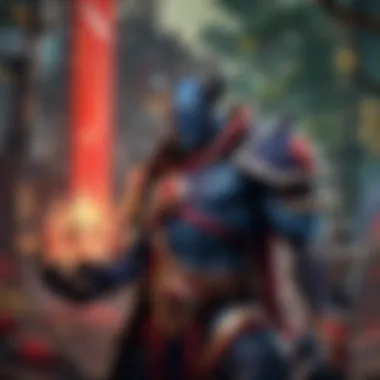

Hybrid decks encapsulate the spirit of both aggressive and defensive strategies. Often, these decks are built around heroes who can adapt to both roles, enabling flexible plays throughout the game. For example, a deck that includes heroes like Pugna and Timbersaw can easily switch between pushing lanes and defending against enemy advances. This versatility can catch opponents off guard.
Such decks require careful crafting and skillful execution. Players need to be aware of their opponents' choices and be ready to adjust strategies as the match progresses. This can involve switching roles between offense and defense based on the state of the game. Hybrid decks can lead to surprising victories, particularly if you exploit the opposition's miscalculations.
Key takeaways: Understanding types of decks lets you tailor strategies to enhance your team’s synergy and respond effectively to the nuances of any match.
Meta Considerations
Understanding meta considerations is crucial when navigating the complexities of Dota. The term ‘meta’ refers to the prevailing trends and strategies within the game, shaped by the interactions of heroes, items, and player behavior. Ignoring these trends can leave a player at a disadvantage, as the most effective strategies and compositions can shift over time. Players must stay attuned to these dynamics to remain competitive, making meta considerations a foundational aspect of deck selection.
Key Elements of Meta Considerations:
- Hero Viability: Some heroes shine in certain patches due to buffs or nerfs. Keeping track of alterations to hero stats and abilities informs which heroes gain greater efficacy.
- Strategic Preferences: Player trends can create a cyclical nature of favored strategies. Identifying and adapting to shifts can capitalize on the foes' weaknesses while enhancing your deck’s effectiveness.
- Community Insights: Engaging with community discussions on platforms like Reddit or through streams may provide clear insights into popular decks and counter strategies.
By factoring in these meta considerations, players can adapt their deck strategies to meet current demands. This adaptability not only improves winning chances but fosters a deep understanding of the game's evolving nature.
Understanding the Current Meta
Dota 2 is a constantly shifting environment, influenced by patches, balance changes, and community discussions. Gleaning insights from patch notes (which detail the specifics of hero adjustments) is crucial. Following prominent esports tournaments can also help identify which decks are resonating with top-tier players and why.
Current meta trends can often be identified by:
- Hero Win Rates: High win rates can indicate that a hero has become too powerful in the current environment.
- Itemization Trends: Heroes may shift favor based on new item releases or reworks. For example, if an item like Aghanim's Scepter becomes more integral, that may lead to different hero choices.
- Counter Picks: Some heroes naturally function as counters to others. Knowing what’s currently in vogue enables one to preemptively counter opposing strategies.
Adapting Decks to Meta Changes
Flexibility is key in Dota, especially in combatting shifts within the meta. Adapting your deck may involve several strategies:
- Scout Opponent’s Trends: Assess which decks or heroes are popular among your opponents. A proactive approach is understanding whom your enemies are likely to choose can help you pivot effectively.
- Incorporating Variants: Instead of completely changing your deck, consider slight variations to accommodate meta changes. For instance, if a normally solid hero has fallen out of favor, maybe add a hero who counters the current dominant picks instead.
"In Dota, the only constant is change." - A wise player once remarked.
- Testing and Adjustments: Frequent scrimmaging or ranked games can reveal how your current deck holds up against popular strategies. Don’t hesitate to make changes after every few matches; iterative refinements can lead to remarkable progress.
Deck Selection for Various Roles
Choosing the right deck based on your role in Dota is like picking the right tool for the job. Each hero role has distinct objectives and responsibilities in a match, which makes the selection process pivotal for maximizing team effectiveness. Proper deck selection is not merely about individual comfort; it’s about creating harmony within the team and ensuring that each player can shine in their respective positions.
When you select a deck tailored to your role, you not only enhance your gameplay experience but also support your teammates in achieving victory. A well-structured team with diverse roles can create strategic opportunities, counter enemy heroes effectively, and control the game flow to your advantage. In this section, we will take a deeper look at the ideal decks suited for the carry, support, and offlane roles, illustrating how each contributes uniquely to the team's success.
Carry Role Decks
The carry role is often perceived as the linchpin of a team's late-game success. Selecting the right deck for a carry emphasizes scalability, as carries typically depend on accumulating gold and experience to become powerhouses in the later stages of a match.
Key Considerations for Carry Decks:
- Hero Scalability: Look for heroes that can scale well, meaning they become stronger as the game progresses. Examples include Anti-Mage and Spectre, who can turn the tide of battle when properly farmed.
- Farm Efficiency: Carriers must farm efficiently. Items like Battle Fury or Maelstrom allow for rapid gold accumulation, impacting their item timing significantly.
- Team Synergy: Ensure the carry complements the teammates. For instance, having a powerful initiator can create opportunities for the carry to deal damage uninterrupted.
Using heroes that possess strong late-game abilities along with proper itemization strategies can be game-changing. A well-timed Ultimate or a critical strike can spell doom for the enemy team.
Support Role Decks
Support heroes play a crucial but often underappreciated role. Properly selected support decks can set the stage for not just winning lanes, but also for creating map pressure and securing objectives.
Why Support Decks Matter:
- Map Control: Supports are often tasked with warding to secure vision. Choosing heroes like Lion or Crystal Maiden who can zone enemies while providing utility is essential.
- Saving Teammates: Heroes with healing abilities, like Dazzle or Warlock, can turn fights by keeping carries alive. The ability to save teammates is a force multiplier in any engagement.
- Positioning and Timing: Understanding when to be aggressive or defensive can be the difference between victory and defeat. Supports must adapt their playstyle according to their team's needs.
Strategically picking the right support heroes means that you can effectively influence the pace of the game and increase your team's chances in crucial team fights.
Offlane Role Decks
Offlane heroes serve a unique and pivotal role in diversifying strategy. They are generally tasked with creating space for the carry to farm while also applying pressure on the enemy. Selecting an effective offlane deck is about balancing aggression and survivability.
Noteworthy Traits of Offlane Decks:
- Survivability: Heroes like Tidehunter and Underlord can withstand damage while providing crowd control. Their ability to stay in fights allows your team to capitalize on their presence.
- Space Creation: Offlaners must create opportunities on the map. Choose heroes that can harass opponents and disrupt their farm consistently.
- Initiation Potential: A good offlane hero can initiate fights and turn engagements around, changing the tide in your favor. Selecting heroes with initiation spells, like Puck or Earthshaker, can enable your team to seize control.
Ultimately, an optimal offlane deck bridges the gap between aggression and defense, making it an often underrated cornerstone of team strategy.
Remember, the key to winning games often lies in how well each role is harmonized through proper deck selection. A cohesive strategy is fundamental for team success.
Deck Combinations to Avoid
In the vibrant and complex arena of Dota, the choices players make regarding their deck composition can make or break a match. While some combinations can lead to devastating victories, others can trap players in a cycle of misfortune. Choosing the wrong blend of heroes may not only result in individual underperformance but may also hinder the entire team's synergy. Understanding which deck combinations to steer clear of is essential for refining gameplay and enhancing effectiveness in matches.
Risky Hero Pairings
Certain hero pairings can lead to disastrous outcomes if not thought through. Imagine coupling a high-damage dealer like Phantom Assassin with a late-game support like Dazzle. At first glance, it might seem like a solid trio with damage and healing. However, this combination lacks the early-game presence needed to secure leads. A lack of aggression in the mid-game can let the enemy secure objectives, often leading to a slippery slope of team fights lost due to poor positioning and timing.
Additionally, consider the pairing of Tinker and Invoker. Both heroes excel at dealing damage but often require substantial resources to shine. If they find themselves in the same lane, they can easily end up competing for experience and gold. Consequently, each hero limits the other's growth potential, creating a recipe for failure. When selecting heroes, ask whether they can function without relying too heavily on one another, thereby ensuring that individual players can carry their weight.
If you're not coordinating a strong strategy, hero pairs can turn into a double-edged sword.

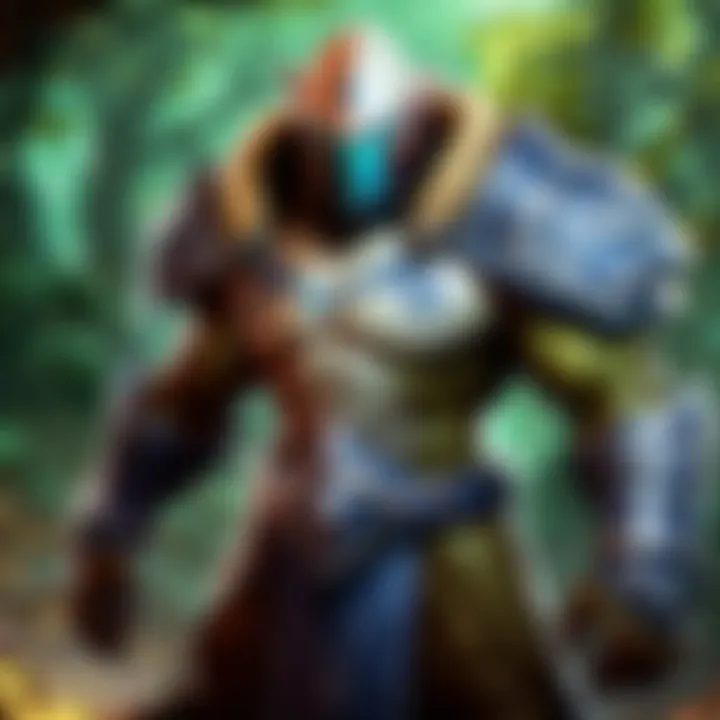
Overlapping Roles
Role alignment is crucial in the game of Dota. Overlapping roles can create chaos in a deck; two heroes trying to fulfill the same function can diminish overall team effectiveness. For example, if both Luna and Lifestealer are drafted with the intention of taking the role of carry, you'll soon find that important support roles are left unfilled. As a result, while each may thrive independently, their combined lack of versatility can lead to gaping holes in strategy, especially during early game scenarios where proper support is key.
Moreover, bluffing your team’s strategy with unclear hero roles can also add confusion. If you have heroes like Shadow Fiend and Templar Assassin both trying to farm at mid-lane, you’re losing opportunities for gaining map control. Instead, clear intentions should be established from hero selection through strategy execution, ensuring that each player understands their responsibility.
In summary, understanding which deck combinations to avoid can significantly impact decision-making and gameplay success. Steering clear of risky hero pairings and overlapping roles not only promotes individual growth among heroes but also strengthens team cohesion. Navigating these choices wisely prepares players to face both enemies and challenges in the competitive Dota landscape.
Practical Tips for Deck Building
Crafting a well-rounded deck in Dota is not merely an act of grabbing your favorite heroes and hoping for the best. It is an intricate dance of strategy, foresight, and adaptability. This section serves as a pivotal turning point for players looking to enhance their deck-building abilities.
One of the core tenets of effective deck building is the consideration of synergy among heroes. When choosing heroes, it is essential to think about how their abilities complement each other. This inter-collaboration can turn the tide of battle swiftly, and a cohesive unit can outmaneuver opponents who may not have thought deeply about pairing their champions. For instance, imagine a deck that combines Chen's summoning abilities with Tidehunter's team-wide initiations. This combination can create a whirlwind of chaos and control that the enemy will find hard to counter.
Moreover, the incorporation of effective itemization further amplifies the overall power of a deck. Each item provides bonuses that can enhance a hero's capabilities during critical moments. A perfect example is the usage of Black King Bar, which can allow spell-casting heroes to go all out without fear of being silenced.
Analyzing Opponent’s Deck
Understanding the enemy is half the battle, and that rings especially true in Dota. When you're faced with an opposing deck, the first thing to do is to analyze its composition. Look for signs of strength or potential weaknesses. Does their lineup rely heavily on physical damage? If so, it might be worth considering heroes with high armor or shields in your deck.
There are a few elements to keep in mind when breaking down the opposing deck:
- Hero Roles and Functionality: Identify who their carry is, their support heroes, and where the vulnerabilities might lie.
- Item Builds: What items are they likely to prioritize? This should influence your strategy accordingly.
- Win Conditions: What are their key strategies for securing victory? Knowing this allows you to counter effectively.
By taking time to analyze, you can anticipate their moves or assemble a counter-strategy that could outsmart them. Remember, Dota is often a chess game of strategy, where predicting your opponent's next move can mean the world.
Testing and Iteration
After you’ve crafted your deck, it's time to put it to the ultimate test. Iteration is key to refining any strategy, including your deck. Running through matches allows you to understand the dynamics of your pick. If you encounter weaknesses or flaws during these tests, don’t hesitate to tweak your lineup.
To approach this effectively, consider:
- Record and Reflect: Keep a log of match outcomes, what worked, and places where it fell short.
- Seek Feedback: Engage with friends or fellow players. Their insights can be a goldmine for improvement.
- Flow with the Meta: As the game evolves through patches, your optimal deck may require adjustments. Stay updated on changes that could affect hero rankings and item effectiveness.
In the world of Dota, no deck is set in stone. Embracing the mindset of continual learning and adaptation will serve any player well. The more you play and experiment, the better you'll become at recognizing the threads that hold a successful deck together.
"The secret of change is to focus all of your energy, not on fighting the old, but on building the new." - Socrates
Community Insights and Trends
In the ever-evolving landscape of Dota, community insights and trends serve as lamps that guide players through the murky waters of gameplay strategy. The significance of understanding these aspects cannot be overstated; they play a pivotal role in shaping the strategies players adopt and how they approach deck building. The Dota community includes gamers from casual enthusiasts to die-hard professionals, each contributing unique perspectives that can profoundly affect game tactics and deck optimization.
Engaging with the community allows players to gather invaluable information about emerging strategies, potential pitfalls, and innovative hero combinations. These dynamics often shift with the meta, influenced by patches, hero adjustments, and even the evolving skill levels of players. Thus, being plugged into community discussions can furnish a player with foresight, enabling them to adjust their deck choices based on what is bubbling to the surface within the collective consciousness of Dota enthusiasts.
Furthermore, relying on communal insights can lead to a form of collective intelligence, where aggregated knowledge outstrips individual understanding. This could mean that analysis from a well-known streamer or influencer can sometimes spotlight alternatives that may not appear on the radar of more casual players, offering nuanced strategies that are tailor-made for specific heroes or situations.
Influencer Perspectives
The role of influencers in shaping deck strategies cannot be overlooked. They wield considerable influence both in terms of popularity and reach within the Dota community. Often, these individuals have the experience and analytical prowess to break down intricate mechanics of decks and heroes—providing a fresh lens through which players can evaluate their own strategies.
For example, a well-known player might showcase a game where they employed a unique combination of heroes that caught audiences by surprise. They might outline how certain items synergized unexpectedly well with their heroes, or they may highlight the importance of positioning in compelling situations. By sharing their experiences, they enable others to learn and adapt quickly, which can be crucial in a fast-paced game like Dota.
Among the various platforms, Twitch streams and YouTube are vital for this aspect—players can engage not just through direct streams but also by interacting through chat, gaining real-time insights. Influencers often share their thought processes, which can inspire others to think critically about their own deck choices and in-game decisions. This leads to richer gameplay experiences and a deeper understanding of how to maximize each hero's potential in alignment with current community trends.
Emerging Popular Decks
As players experiment with new combinations and strategies, some decks rise abruptly to popularity, often instigated by influential figures in the scene. Recognizing these emerging decks is paramount for players eager to stay competitive. Keeping an eye on trends can afford players new opportunities to either adopt innovative strategies or counter them effectively.
Several factors can contribute to the rise of a deck within the community:
- Meta Shifts: Major patches can alter hero statistics significantly, leading some heroes to become overpowered. Understanding patch notes and their implications can help players identify decks gaining traction.
- Stream Highlights: Moments of brilliance showcased in streams often lead to spikes in popularity for certain decks. Players eager to replicate the success seen in streams often experiment with recently highlighted strategies.
- Community Feedback: Platforms like Reddit often serve as a hotbed for sharing deck lists, challenges faced, and successes achieved. Engaging with these forums can provide insights into what’s currently burning in the Dota community.
"In this game, adaptation is key, and community trends can guide you in a direction of less resistance.
Overall, tapping into community insights and trends can greatly enhance deck strategies. By staying informed and adaptable, players can refine their choices and maintain a competitive edge in the complex chess game that Dota presents. Monitoring influencer perspectives and emerging deck trends offers a strategic advantage that is hard to beat in this dynamic universe.
Ending and Future of Deck Strategies
As we wrap up our exploration into deck strategies in Dota, it’s clear that understanding and adapting your deck choices are key to enhancing your gameplay. Deck strategies are not just a collection of heroes and items; they are the foundation on which victory is built. In the world of Dota, where each match can turn on a dime, being aware of the evolving landscape can make all the difference.
When considering deck strategies, players ought to focus on several elements:
- Flexibility: The ability to adjust your deck based on the meta is crucial. It’s like wearing a coat in the winter and swapping it out for shorts in the summer. Keeping track of which heroes and combinations are performing well helps players stay ahead of the competition.
- Collaboration: It’s not just about individual skill—how your deck synergizes with your teammates can elevate overall performance. Think of it as a well-rehearsed dance; everybody needs to know their moves to shine.
- Innovation: The meta is always changing, and the introduction of new heroes or items can shake things up. Players who experiment with unconventional combinations may discover untapped potential that can turn matches in their favor.
In the end, the future of deck strategies lies in the hands of the players. Those who remain engaged with the community and keep abreast of trending heroes and strategies have an edge. Resources such as Reddit and communities on Facebook can offer insights and discussions that inspire new ideas.
Staying informed means staying competitive—don’t be left in the dust.
Evolving Strategies in Dota
As times change, so do strategies. Dota, being a dynamic game, reflects this evolution through continuous updates and changes to heroes and gameplay mechanics. Players must keep their fingers on the pulse—when new patches drop, adjustments are often made, and savvy players take this knowledge into account.
The importance of adaptability cannot be overstated. A strategy that worked wonders last season might flop against an updated pool of heroes. A case in point is what happened when certain heroes got buffs or nerfs in recent patches; decks built around those characters had to be reconsidered. It’s like a chess player who sees their opponent change play style; they must adapt or face defeat.
Final Thoughts on Deck Optimization
To sum it all up, optimization isn't just a buzzword; it’s a necessity. Every deck can be fine-tuned to maximize its potential effectiveness. The process involves rigorous testing, peer feedback, and a willingness to adapt. Remember, it's a journey and not a destination.
- Analyze your wins and losses to find what works and what doesn't.
- Engage with other players to gather insights—you never know where the next great deck idea will come from.
- Don’t be afraid to try unorthodox combos; sometimes the best strategies are the ones least expected.
Deck strategies require constant evolution, and your willingness to stay engaged with developments within the game will be the measure of your progress. By keenly observing shifts and trends, and by learning from both victories and defeats, you become not just a player, but a strategist in the grand game of Dota.


